When it comes to caring for my crops I think a lot about the natural processes that occur in environments not controlled by humans. The problem is that garden crops are very fragile and need human help.
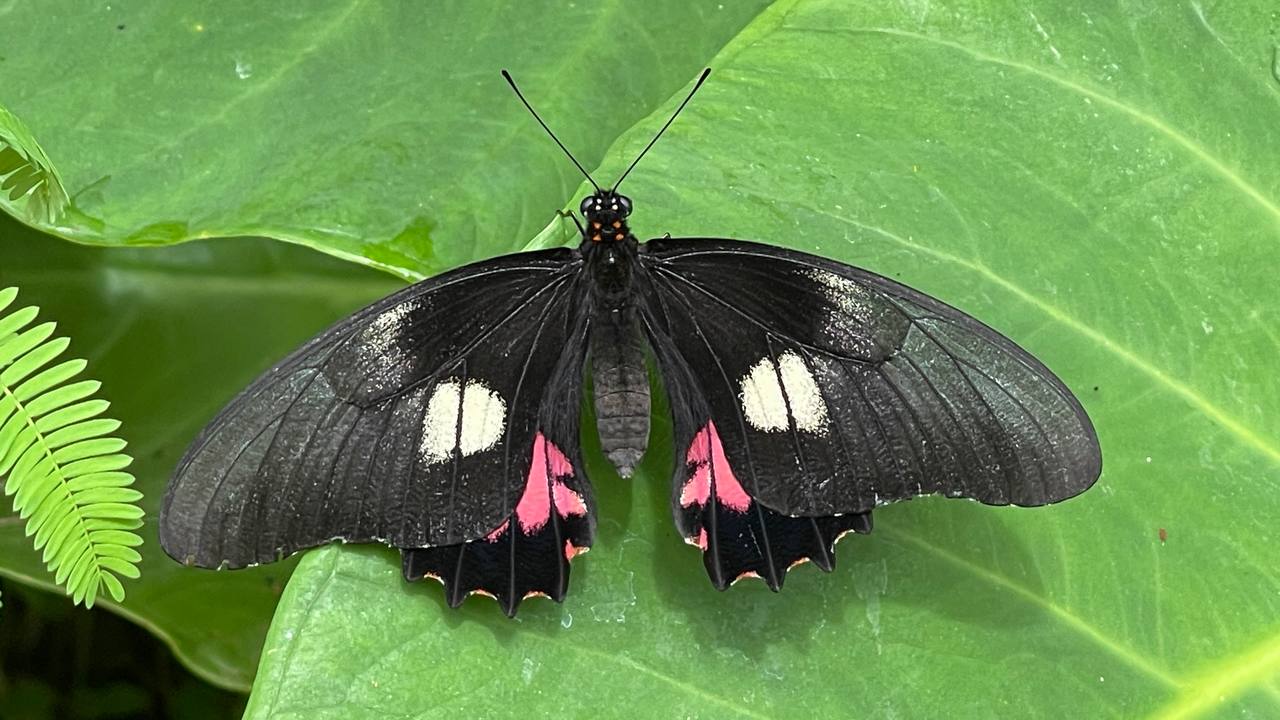
I say problem because this is supposed to be something natural and without human intervention. Well, I can say that more than half of the success of my garden crops is thanks to the pollinators that visit my house every day.
In this publication I will show the most curious of the range of pollinators that visit my garden. There are not only bees, by the way I feel the buzzing every evening at the back of the house where I suppose there is a honeycomb.
I'll start with the one distinct bee in this publication.
**Orchid bee**
This bee is metallic green and the first time I saw it I was amazed because I had never seen a similar species of bee. After some research I learned that it is a bee that is mainly dedicated to the pollination of orchid flowers. There are more than 200 species of orchid bees, their glossa (tongue) is quite long, that is why they were named Eglossa, which comes from Latin and means true tongue.
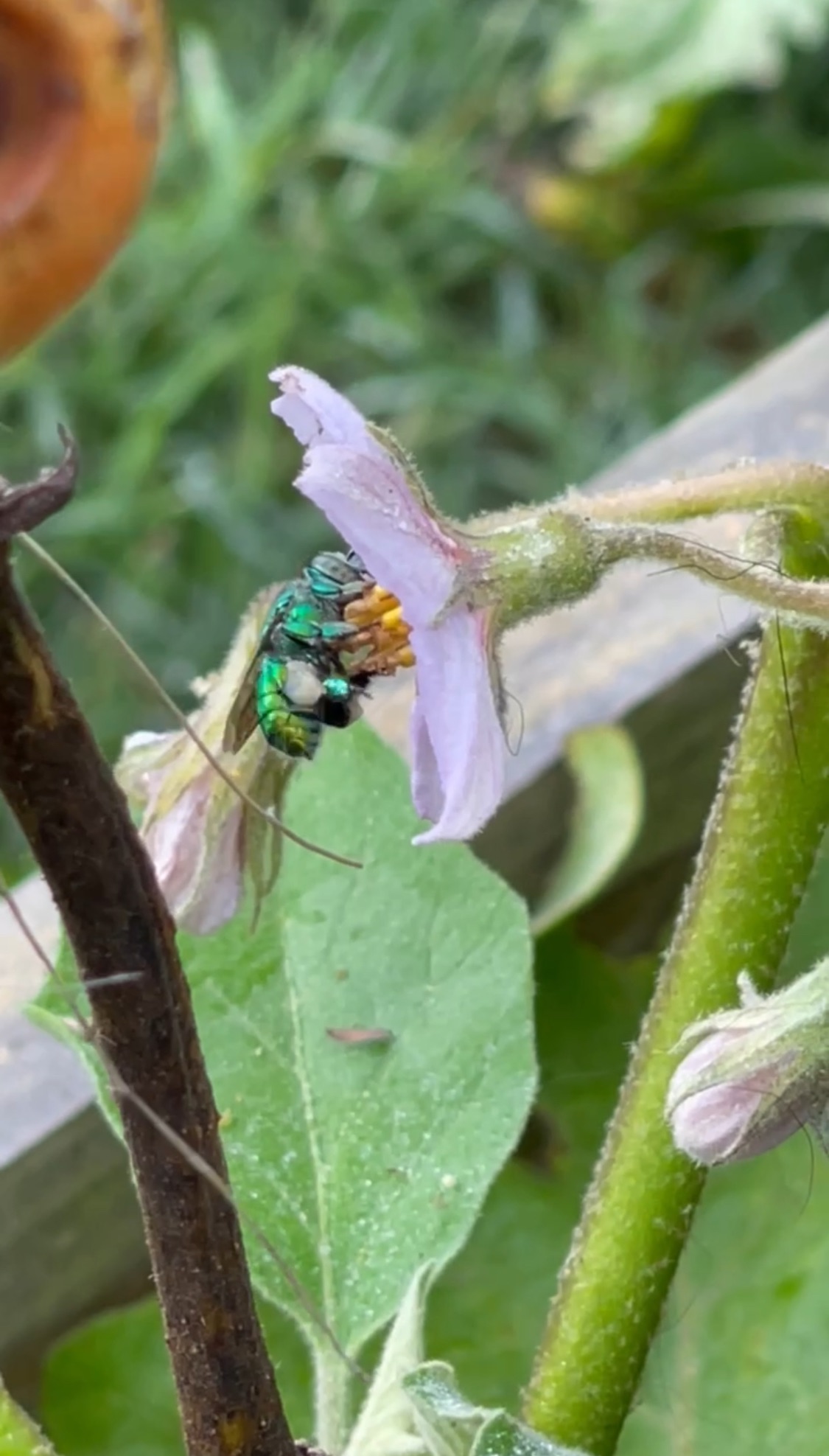
The bee that you can see in the pictures is female and was pollinating my Eggplant plantation. The males are the ones that pollinate orchids, the thing is that orchids do not have pollen or food for this kind of bees. But the males are attracted by the scent of the flowers and so they visit them energetically.
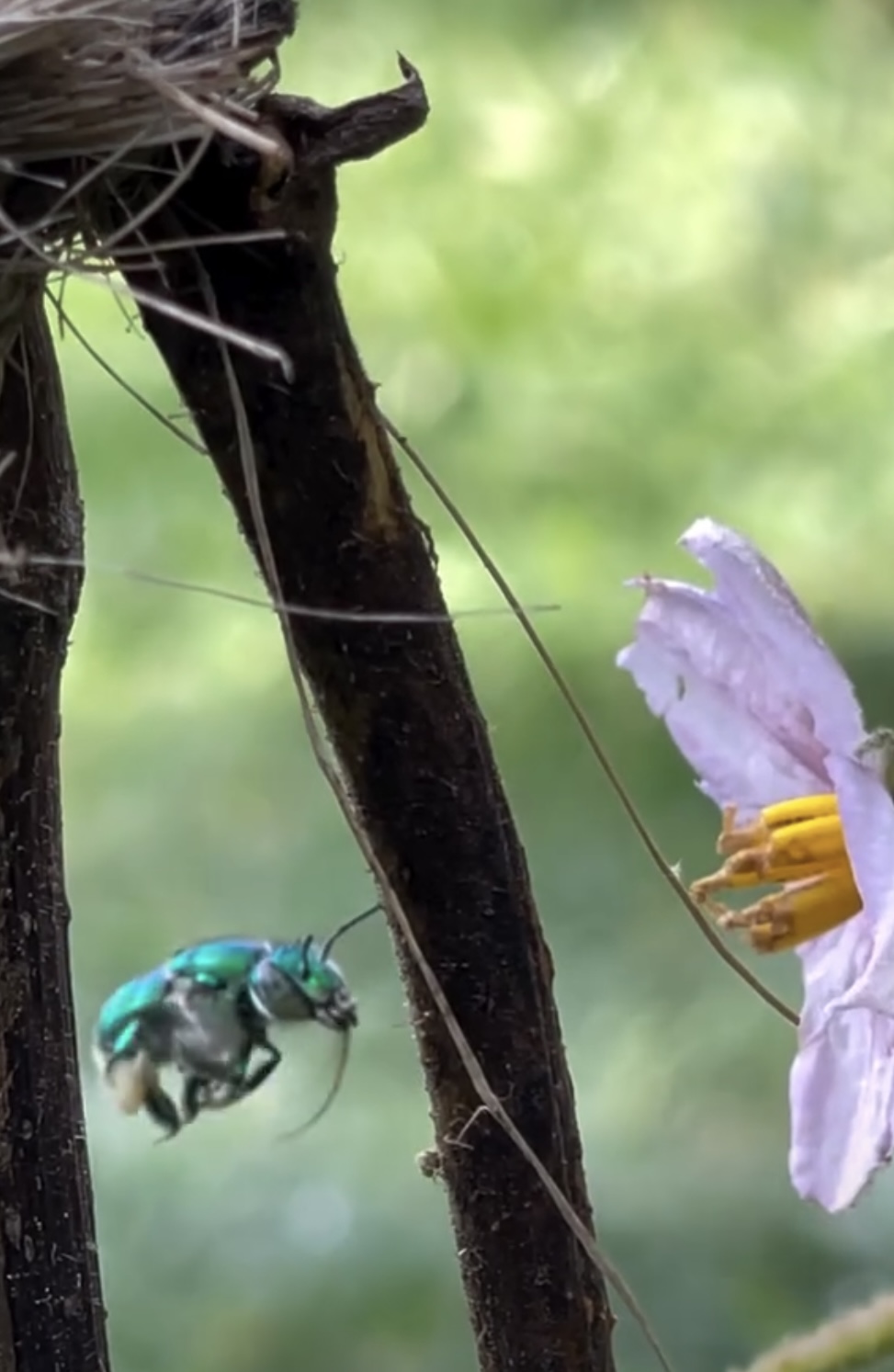
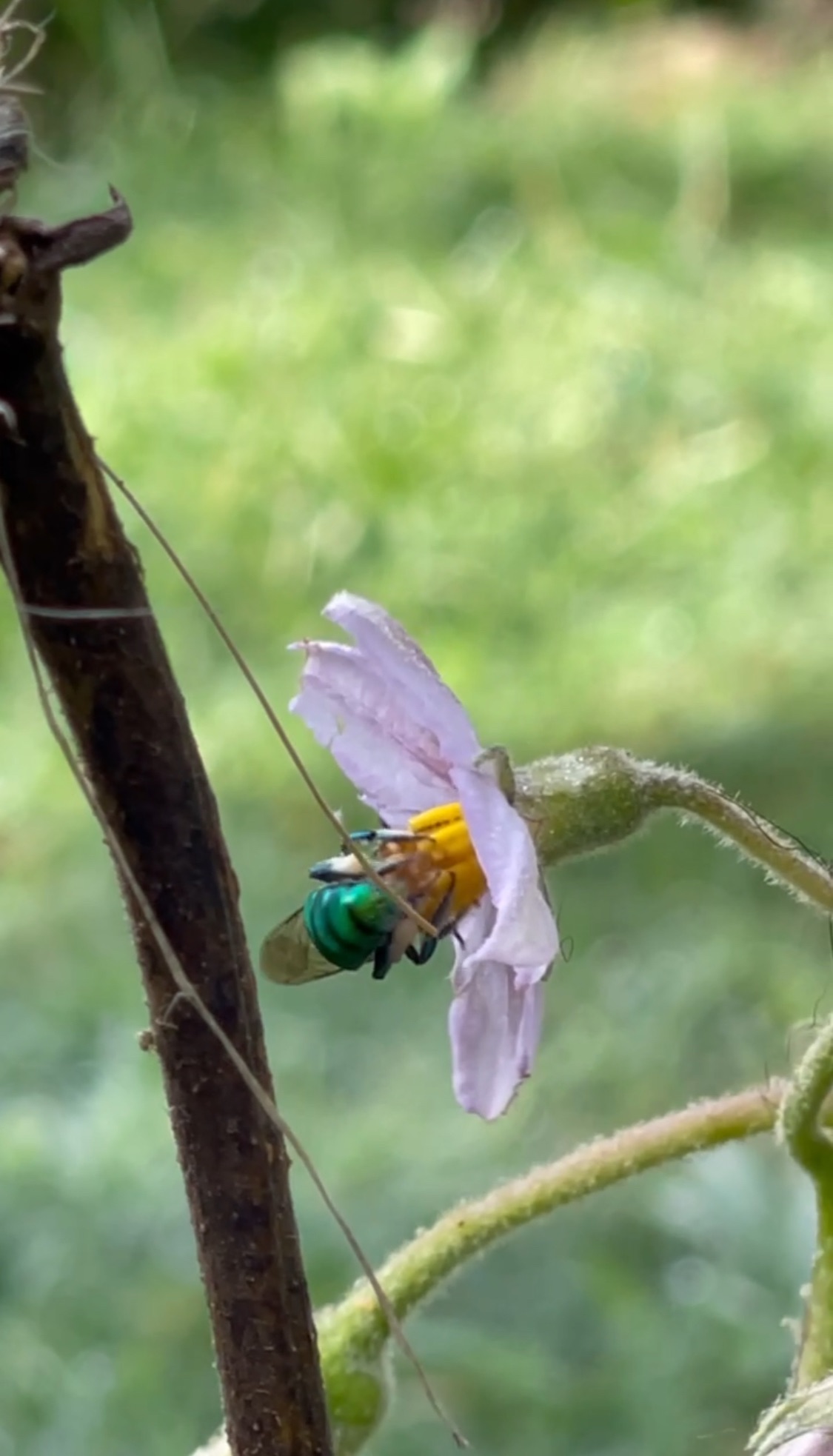
Thanks to this bee and other bumblebees my eggplant crops are thriving.
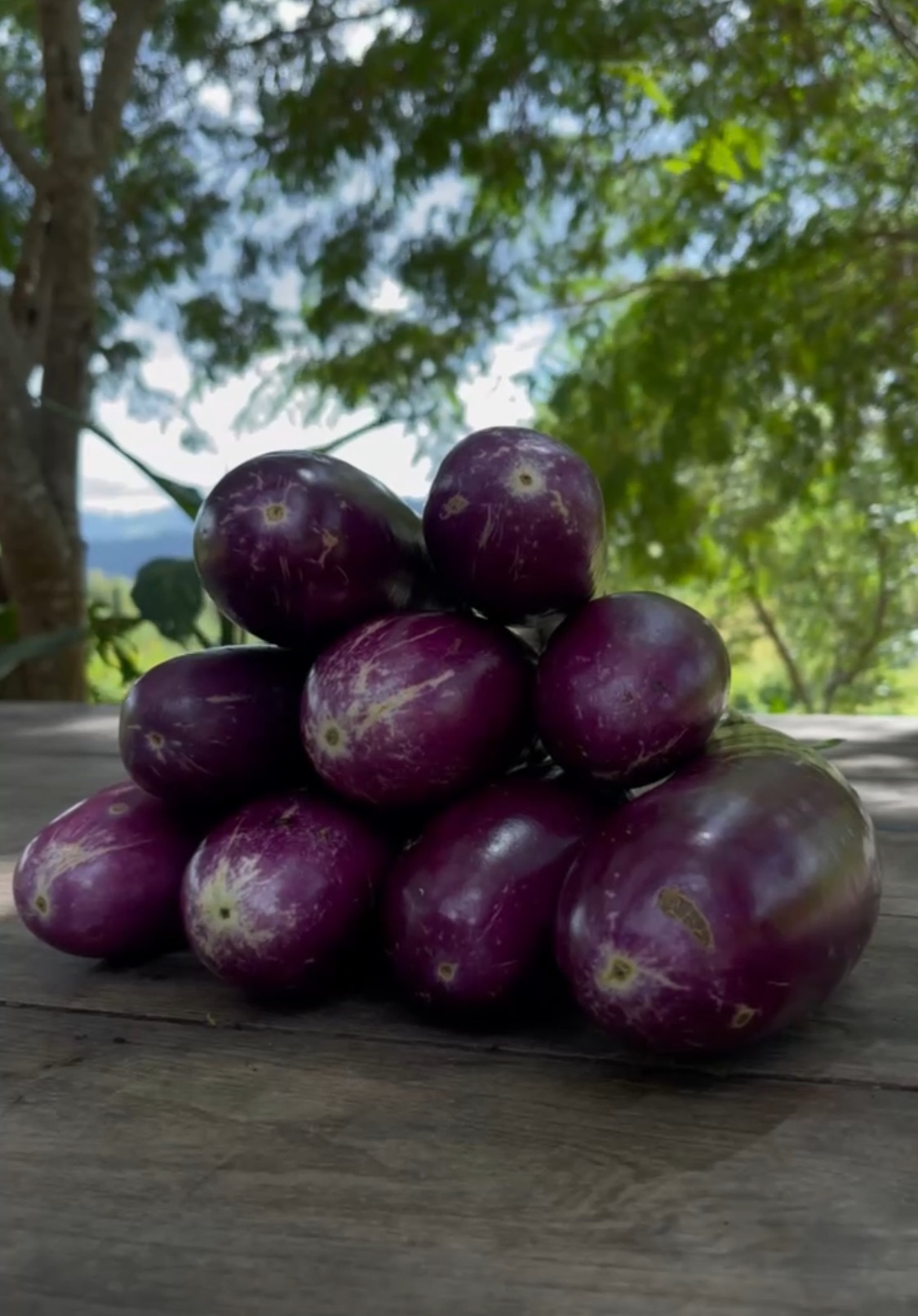
**Butterfly 88**
Its scientific name is Diaethria anna and it is responsible for pollinating my sweet bell pepper and eggplant plants, although I have also seen it feeding on fruits of these same species that fall to the ground, especially those that are in a state of putrefaction. I am fascinated by this species because it seems as if it were a joke where someone purposely painted the number 88 with a marker. But in reality it is totally natural. In addition, it has yellow-green stripes on the inside that become iridescent with the refraction of light.
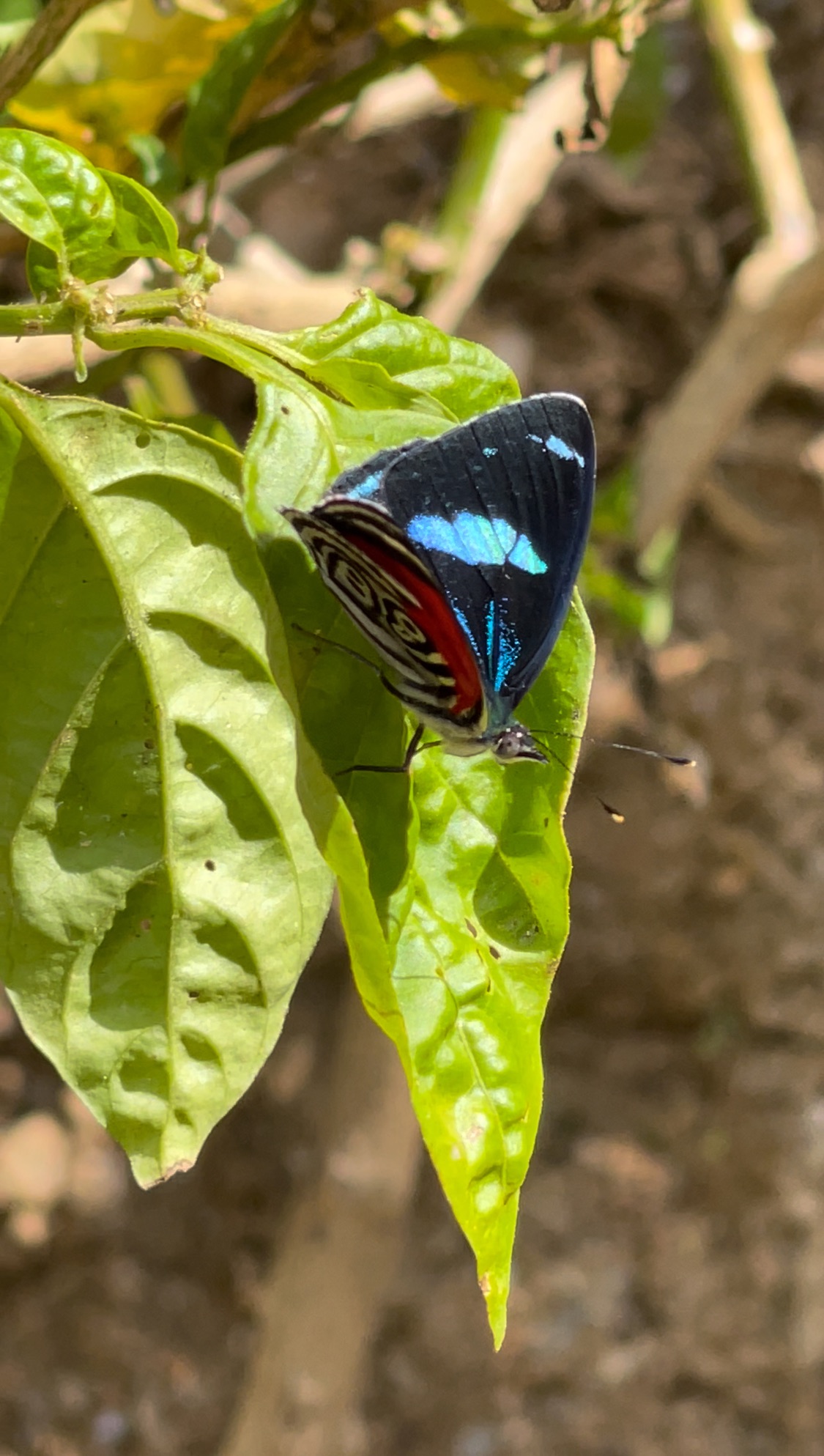
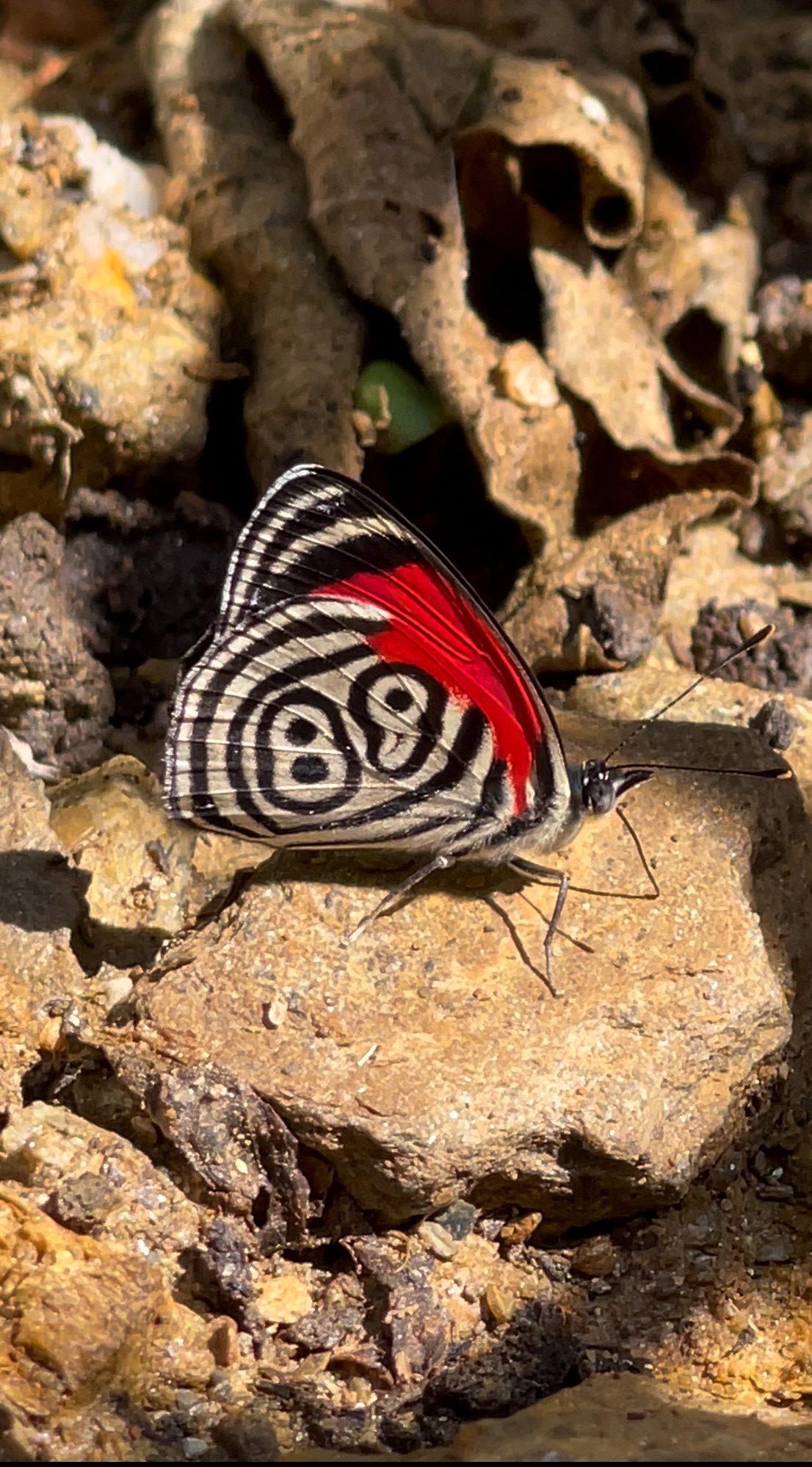
**Transparent butterfly**
In eastern Venezuela it is called the ghost butterfly, it is a butterfly with transparent wings, its scientific name is Napeogenes, normally in its caterpillar stage they feed on different tropical plant species. As a butterfly they feed on rotting fruits and pollinate my tomato plants, although I have not seen them much this year.
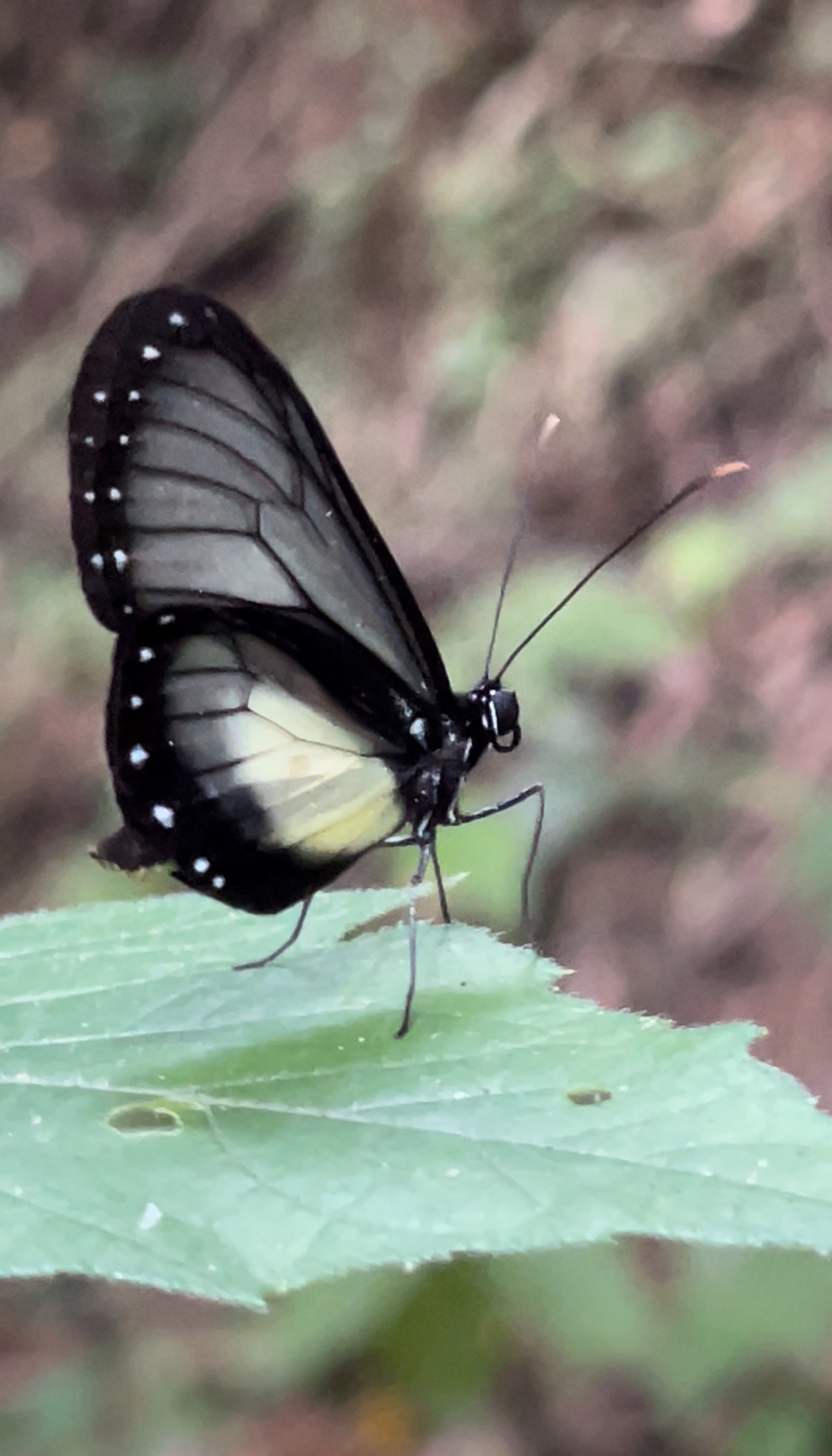
**Cookie Butterfly**
Its scientific name Hamadryas amphinom, also known as the "butterfly cookie", is another of the recurrent pollinators in this rainy season in my garden. I usually see it near the flowers of the Cují tree that year after year attracts an important amount of pollinators, reptiles and birds that decide to make their nests in this tree with which we have a love/hate relationship since it gives us a fresh surplus in dry season but it drops a considerable amount of thorns that usually hurt our feet while we walk.
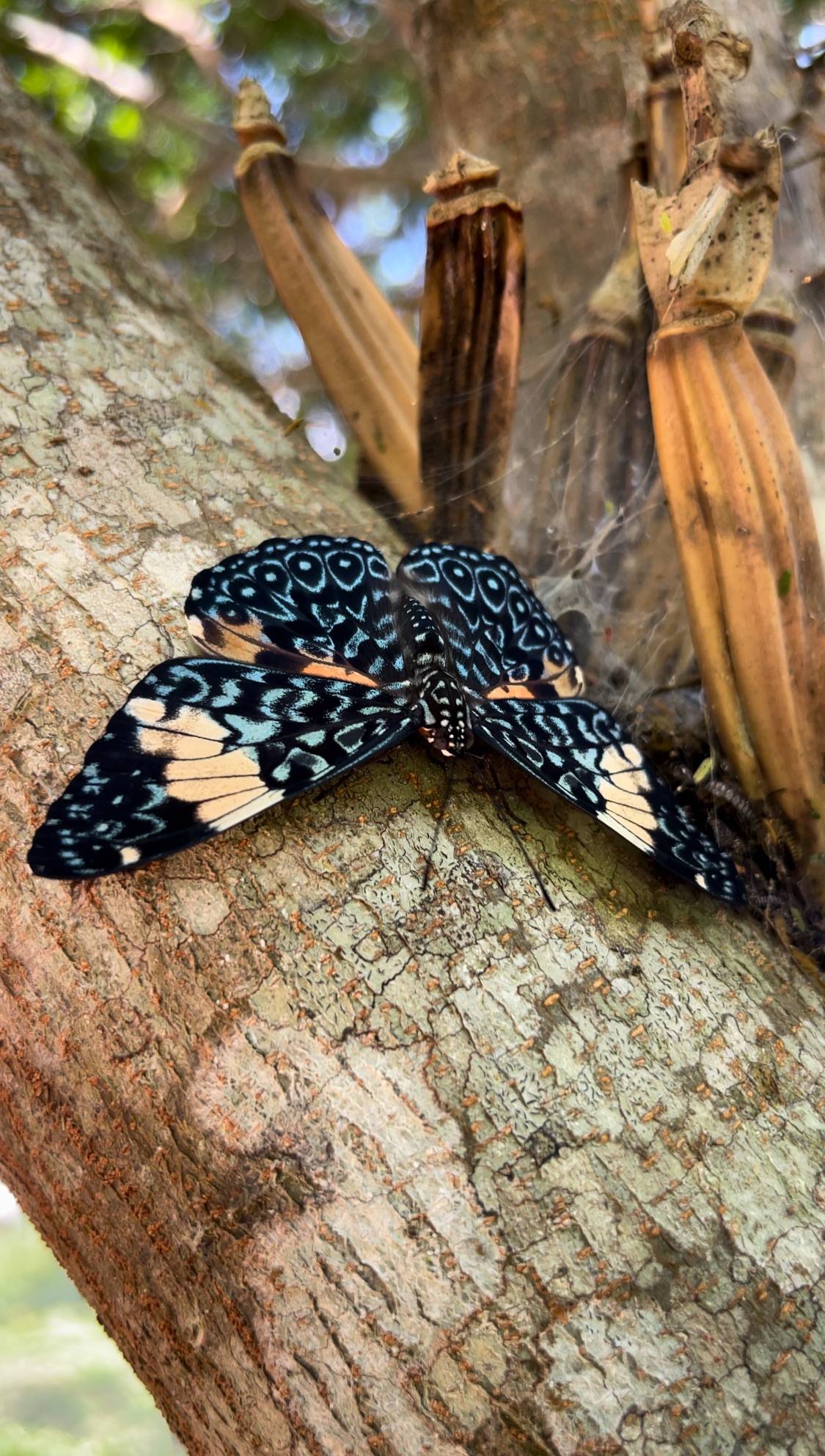
**Hayhurst's Scallop Butterfly**
Its scientific name is Staphylus hayhurstii supposedly only lives in the United States but in my garden there are several and they feed mainly on peppermint, one of my favorite herbs to prepare cocktails and give more flavor to lemonades. It is also normal for it to land on tomatoes although it does not feed if it pollinates their flowers.
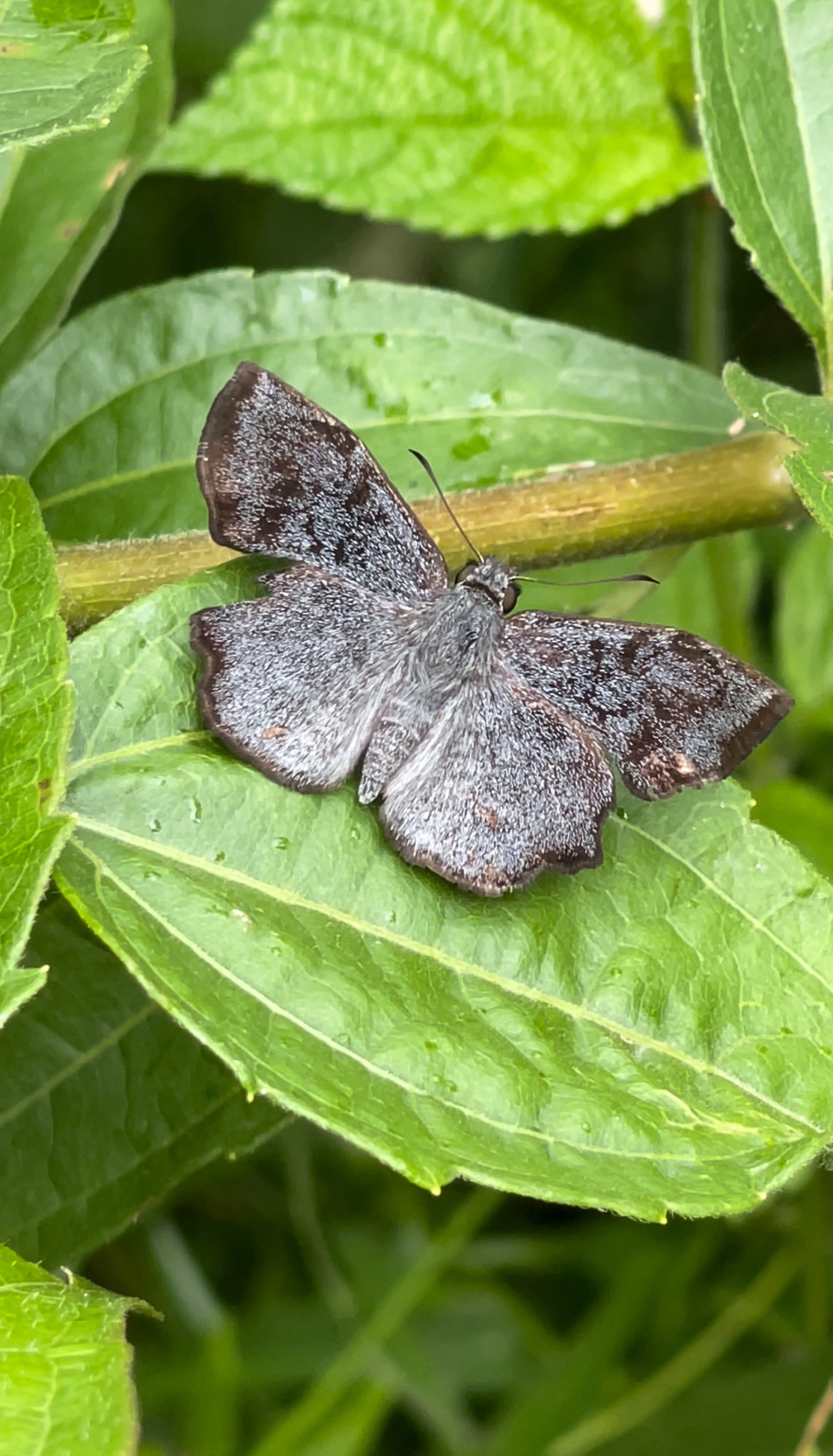
I have been photographing nature for more than 20 years and I never cease to be amazed at all that can happen in a place with a lot of vegetation. I enjoy interacting with different species and thank them for making my crops the most beautiful and prosperous. I wish I knew your language, I know we could be best friends.
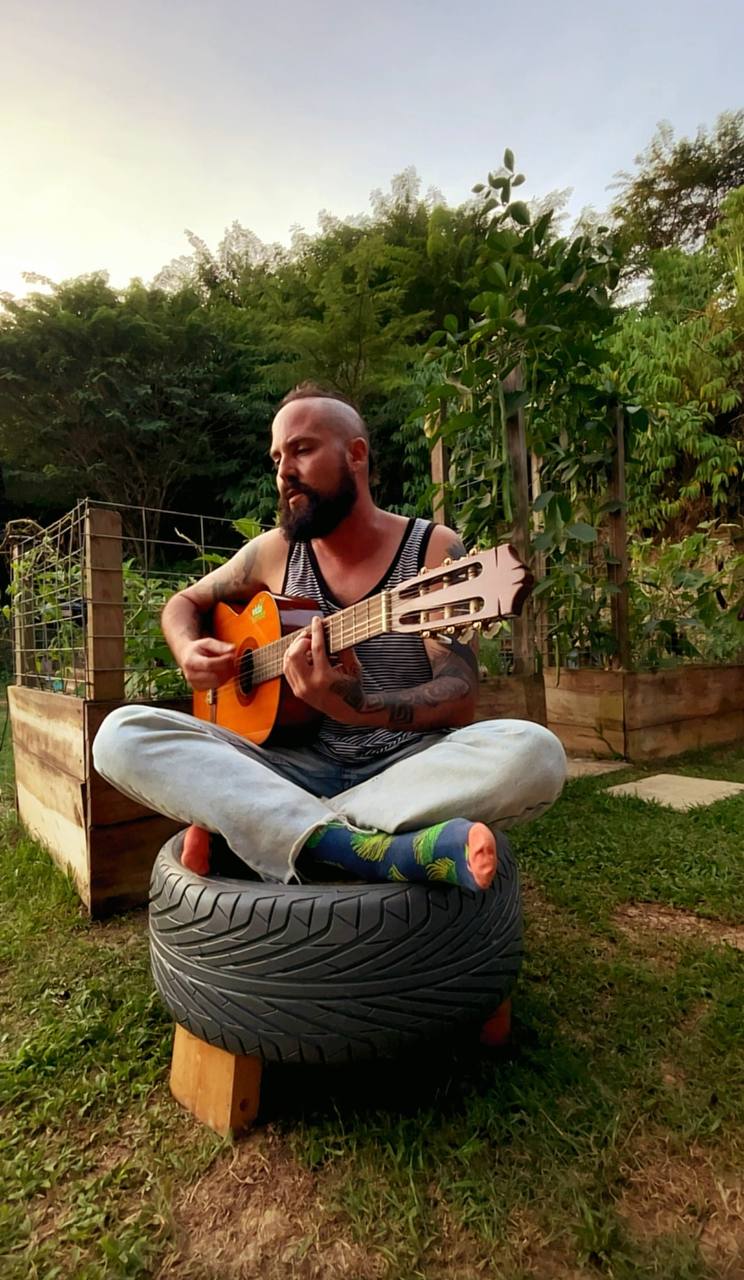
See you soon! I hope you liked the pollinators I have brought in this post. Living in a cloud forest has its benefits.
Enjoy
My life among pollinators 🐝
@arrozymangophoto
· 2024-09-12 22:29
· HiveGarden
#hivegarden
#gardering
#gardenjournal
#curangel
#post
#ocd
#nature
#aninalphotography
#photography
Payout: 0.000 HBD
Votes: 1000
More interactions (upvote, reblog, reply) coming soon.